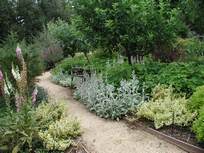MId-June and everything in the garden is full and lush. Your Japanese maples might be getting a little too full for your taste-outgrowing its space, crowding the neighbors, looking like a boring blob. Take the fear out of pruning with these easy steps.

Pruning any plant is necessary for several reasons-to control size or shape, to remove dead or diseased branches, to improve structure or to stimulate new growth. Pruning also can improve the health of a plant by increasing air circulation, allowing more light into the center and reducing disease problems.
Japanese maples do not need a lot of pruning. June is the best time of year to prune them as the leaves have become full size. The least favorable time to prune would be early to mid fall just as it is sending nutrients and energy to store for the cold months. Bring out your tree’s personality by symmetrically thinning out about a third of the small twigs throughout the tree and any dead twigs. Japanese maples less than 15 years old are prone to put on new growth that looks like a buggy whip: unattractively skinny with no side branches. Shortening or removing the buggy whips only stimulates more of the same. Be patient. You will be surprised to find that, as the whips age, they fatten up, develop lateral branches, and turn into nice-looking scaffold limbs. Make sure not to thin to much on the sides of the tree if they are exposed to sunlight as that could cause sunburn. Use the "1/3 rule" when deciding where or how far back to cut a branch – that is prune to an upward or outward growing branch that is at least a third as big as the one you are cutting.
Avoid attempting to restrict the height of a Japanese maple. It won’t work. The tree will simply grow faster with thin, unruly branches. You can reduce the height of the tree a bit by removing branches that grow in an upward direction to a lower branch. The width of these trees, on the other hand, can be somewhat modified. Trim side growth and foliage that is hanging too low by cutting to branches farther back in the tree. It’s time consuming to prune a little, then stand back to decide where the next cut will be, but when you’re finished, your new tree will have an airy, delicate appearance allowing you to see into the tree and admire the

 andscapes that provide four seasons of interest. Here are some tips I pass along.
andscapes that provide four seasons of interest. Here are some tips I pass along.